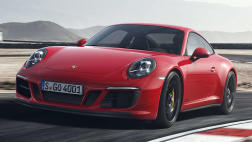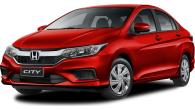After the embarrassing history of its Avalon, Toyota's previous attempt at being taken seriously by family-car buyers in Australia, the Toyota Aurion is finally making a name for itself. This model is currently averaging almost 2000 sales per month in Australia, Avalon struggled to do half that number.
As a solid starting point, the Aurion is considerably less conservative in appearance than the Avalon. And it has been given a tougher look than its non-identical twin brother, the Toyota Camry. Aurion has a semi-European look that works nicely. Note that the Camry is now sold only in four-cylinder format, whereas the Aurion is purely a V6.
Aurion is built in Australia and carries a fair bit of Aussie design to alter its appearance and on-road dynamics it from the Japanese/American original.
Toyota Aurion is driven by a 3.5-litre, twin-cam, V6 engine. Toyota is making a huge play of it having more power than the Falcon and Commodore. However it’s torque that does the work in real life, not power. The Toyota's top torque comes in pretty high in the rev range, indeed so high that few everyday drivers will ever use it. But there's good pulling power from relatively low revs so the on-paper numbers don’t tell the real-world story.
Aurion's engine is smooth, strong and nicely responsive. Using a six-speed automatic in all variants gives it a marketing edge over Ford and Holden, the former only offering six ratios in more expensive models, and the latter not having one at all at this stage.
The Toyota transmission is a real beauty, gear changes are barely noticeable and it seems to be in the right ratio pretty well all the time. Pseudo manual changes can be made should the driver feel the need for a bit more performance, or realise that the car isn’t responding correctly to rapidly changing road conditions.
Aurion is slightly smaller and lighter than Holden Commodore and Ford Falcon and beats both in official fuel consumption numbers. The Toyota's 9.9 litres per 100 kilometres being 1.0 litre under the Holden and 0.8 litres per hundred lower than Ford.
On the road, most Aurion drivers are likely to use ten to eleven litres per hundred kilometres in suburban and city running. This will typically drop to eight to nine litres on motorways and moderately paced country driving.
As befits an Australian family car, Aurion has good interior space. The front seats are well-shaped and provide good support, obviously not sportscar support, but the family man who likes to drive will be happy with the way the seats work during sporty cornering. There's good rear-seat legroom, though as is the way with virtually every car in this class, the back seat can’t really transport three large adults without a degree of shoulder and leg rubbing. A trio of children up to their mid teens will certainly have room to move. Though the seats are set relatively high to maximise legroom, the headroom within Aurion is good in all seating positions.
Oddments stowage spaces are plentiful, with a good sized centre console, though the door pockets are relatively slim.
Toyota Aurion's boot is also well-shaped and can carry a lot of gear, partly because the car is a front-wheel drive so there's no space consuming differential underneath. The fashionably stubby tail means the boot opening will limit the size of boxy items. The Aurion is only offered as a sedan, whereas Ford Falcon and Holden Commodore have immensely practical station wagons in their lineups.
The Avalon was already an excellent on-road performer, particularly in the handling department, but Toyota engineers have further refined the Aurion following a lot of local testing on rough country roads. Not to forget suburban surfaces that have seen better days. Handling is precise and predictable. Slight understeer comes in as the limits are approached. The transition from one bend to another is coped with in a competent manner. ESP is there should the driver overstep the mark.
Ride comfort is good, even on the aforementioned rough-and-ready Aussie roads, though some surfaces can catch it out at times, resulting in a slightly jittery ride.
Toyota Aurion may finally be succeeding in what others have tried to do for decades, taking on Ford and Holden at their own family-car game.
Model Range
AT-X 3.5-litre four-door sedan - $34,990
Prodigy 3.5-litre four-door sedan - $39,500
Sportivo SX6 3.5-litre four-door sedan - $38,500
Sportivo ZR6 3.5-litre four-door sedan - $42,500
Presara 3.5-litre four-door sedan - $49,99
Toyota Aurion 2007: At-X
| Engine Type | V6, 3.5L |
|---|---|
| Fuel Type | Unleaded Petrol |
| Fuel Efficiency | 9.9L/100km (combined) |
| Seating | 5 |
| Price From | $4,180 - $6,160 |
| Safety Rating |
|
Pricing Guides









.jpg)














.png)




.jpg)